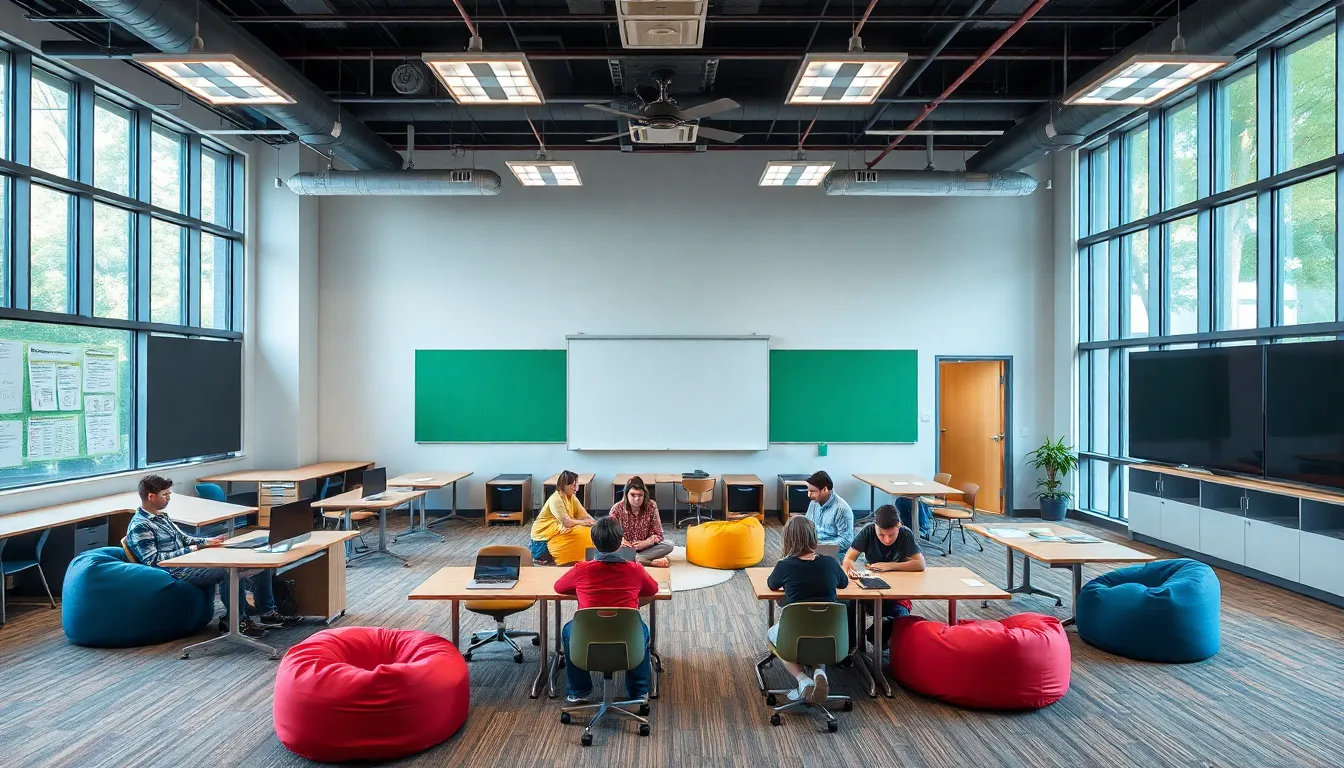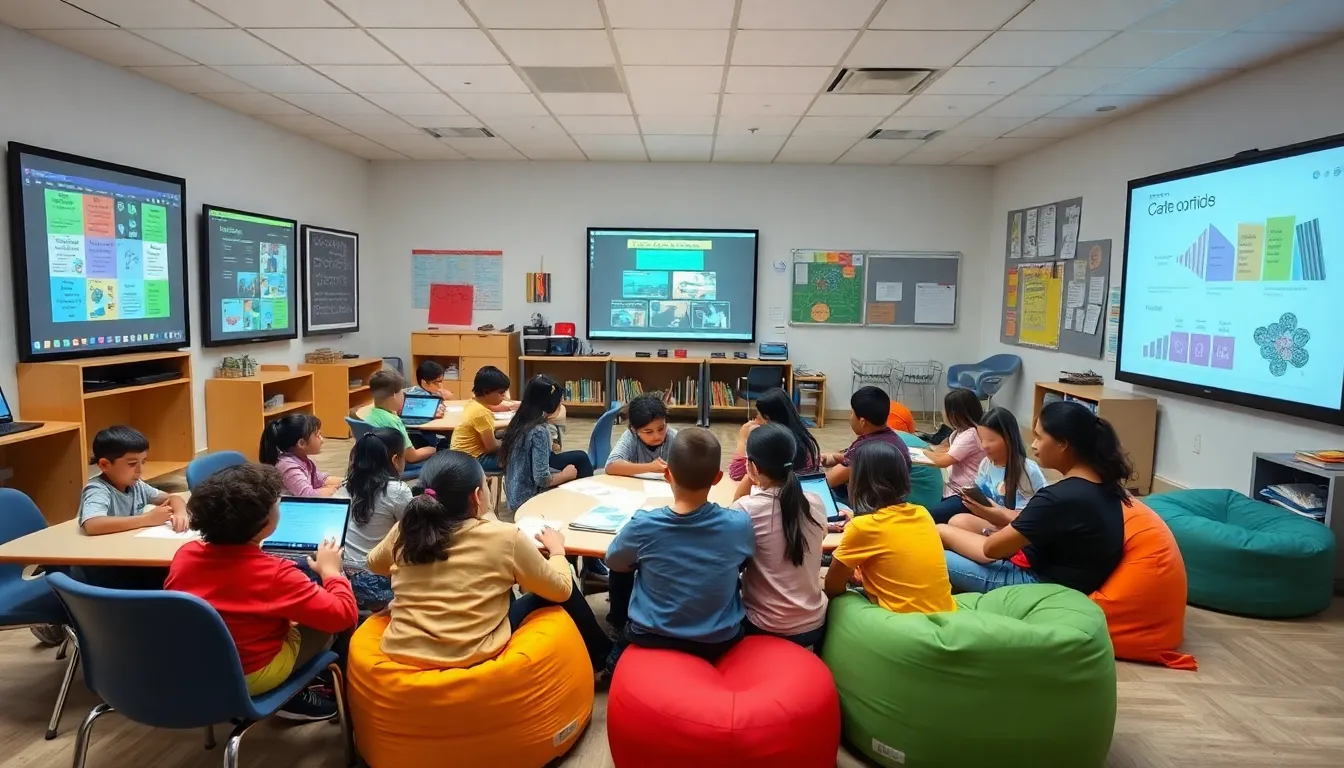Creating an effective classroom setup can transform the learning experience. A well-organized space not only fosters engagement but also enhances student collaboration and productivity. Teachers often find that the right arrangement can lead to improved focus and a more positive atmosphere, setting the stage for academic success.
From choosing the right furniture to incorporating technology, every element plays a crucial role in shaping how students interact and learn. By understanding the principles of effective classroom design, educators can create environments that cater to diverse learning styles and promote a sense of community. A thoughtful setup isn’t just about aesthetics; it’s about crafting a space where students feel inspired and empowered to thrive.
Table of Contents
ToggleImportance Of Classroom Setup
Classroom setup significantly influences the learning experience. A thoughtful arrangement can enhance engagement, collaboration, and productivity among students.
Impact On Learning Environment
Classroom setup directly affects the learning environment. Research shows that the arrangement of furniture influences student behavior and interactions. Flexible seating options, such as group tables or lounge areas, promote collaboration. A well-lit space enhances focus, while organized materials reduce distractions. The presence of technology, like interactive whiteboards, also facilitates modern teaching methods. Altogether, these elements create a stimulating environment conducive to learning.
Role In Student Engagement
Student engagement increases with a well-designed classroom setup. Engaging layouts encourage active participation and foster a sense of belonging. When students feel comfortable and included, their motivation rises. For instance, seating arrangements that allow group discussions facilitate peer interaction. Displaying student work around the classroom builds pride and a connection to the space. Overall, a thoughtfully organized classroom inspires students to take ownership of their learning.
Types Of Classroom Layouts

Classroom layouts significantly impact student interaction and engagement. Understanding different types of setups can help educators choose the best arrangement for their educational goals.
Traditional Vs. Modern Layouts
- Traditional Layout: This layout consists of rows of desks facing the teacher’s desk or chalkboard. It supports direct instruction and minimizes distractions, making it suitable for lecture-based teaching. However, it limits group work and collaboration among students.
- Modern Layout: A modern layout promotes a more dynamic approach. It often includes collaborative group seating, flexible furniture, and various activity zones. This setup encourages interaction, peer learning, and active participation, which aligns with contemporary educational practices.
Flexible Seating Arrangements
- Collaborative Groups: Desks arranged in clusters enable students to work together on projects. This enhances teamwork skills and fosters communication.
- Lounge Areas: Incorporating casual seating, such as cushions or bean bags, offers a relaxed environment. This can motivate students to engage in discussions and creative activities.
- Choice Components: Allowing students to choose their seating promotes autonomy. It can instill a sense of ownership over their learning environment.
- Adaptive Furniture: Using adjustable desks and chairs supports various learning preferences. This adaptation facilitates individual focus or group work as needed.
Essential Elements Of An Effective Classroom Setup
A well-organized classroom setup includes essential elements that enhance learning experiences. Proper furniture selection and technology integration play crucial roles in promoting engagement and collaboration.
Furniture Selection
Selecting the right furniture shapes classroom dynamics. Flexible seating options, such as collaborative tables and adjustable desks, accommodate diverse learning preferences. Movable furniture allows for easy reconfiguration, supporting various activities and group work. Ergonomic chairs promote comfort during long periods of sitting, reducing distractions. Storage solutions, like shelving and cabinets, keep materials organized, helping students focus on learning. Ensuring that furniture is proportionate to the classroom size maximizes space and encourages movement.
Technology Integration
Integrating technology enhances instructional methods and student interaction. Smartboards facilitate interactive lessons, engaging students in real-time. Tablets and laptops support personalized learning experiences, allowing for individualized pacing and access to resources. Reliable Wi-Fi connections are essential for seamless online lessons and research activities. Assessment tools, such as clickers or educational apps, provide instant feedback, improving learning outcomes. Strategically placed charging stations and power outlets promote responsible technology use while minimizing disruptions.
Tips For Optimizing Classroom Setup
Optimizing classroom setup involves implementing strategies that enhance space efficiency and promote engagement. Below are essential techniques and ideas to create a dynamic learning environment.
Space Utilization Techniques
- Flexible Furniture: Use modular furniture that can be rearranged easily for different activities. Tables on wheels facilitate quick space changes for group work or discussions.
- Defined Zones: Create designated areas for various activities, such as reading corners, group workstations, and individual study spots. Clearly defined zones help students understand space purposes and enhance focus.
- Maximize Vertical Space: Use wall shelves and bulletin boards for storage and displays. Vertical space minimizes clutter on desks and maximizes available work areas.
- Optimize Flow: Ensure clear pathways for movement. Arranging furniture to avoid blockages and allowing easy access to materials helps maintain an efficient classroom flow.
- Incorporate Mobile Storage: Utilize carts and rolling bins for easy access to resources while keeping items organized. Mobile storage solutions support a dynamic classroom setup.
Creating Interactive Areas
- Group Seating Arrangements: Organize desks in clusters to encourage collaboration and discussion. Group settings support interaction and collective problem-solving.
- Technology Stations: Set up areas equipped with technology tools like tablets or interactive screens. Tech stations enable hands-on learning and facilitate project-based activities.
- Creative Spaces: Designate zones for art or hands-on projects. Incorporating supplies for creative activities nurtures artistic expression and encourages exploration.
- Quiet Zones: Include spaces for individual work or reflection. Quiet areas equipped with comfortable seating allow students to regroup and focus on personal tasks, promoting self-regulation.
- Display Areas: Create walls or boards to showcase student work. Displaying work fosters pride in accomplishments and inspires others, enhancing the classroom community.
Creating an effective classroom setup is essential for fostering an engaging and productive learning environment. Thoughtful arrangement of furniture and integration of technology can significantly enhance student interactions and focus. By prioritizing flexible seating options and organized materials, educators can reduce distractions and promote collaboration.
Incorporating defined zones and interactive areas encourages active participation while catering to diverse learning styles. When students feel comfortable and valued in their space, their motivation and sense of belonging increase. Ultimately, a well-designed classroom not only supports academic success but also inspires students to thrive in their educational journey.




